Photo
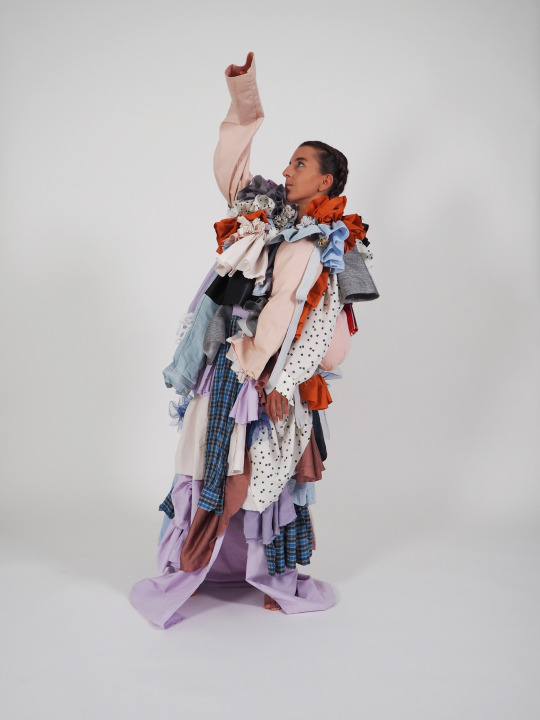
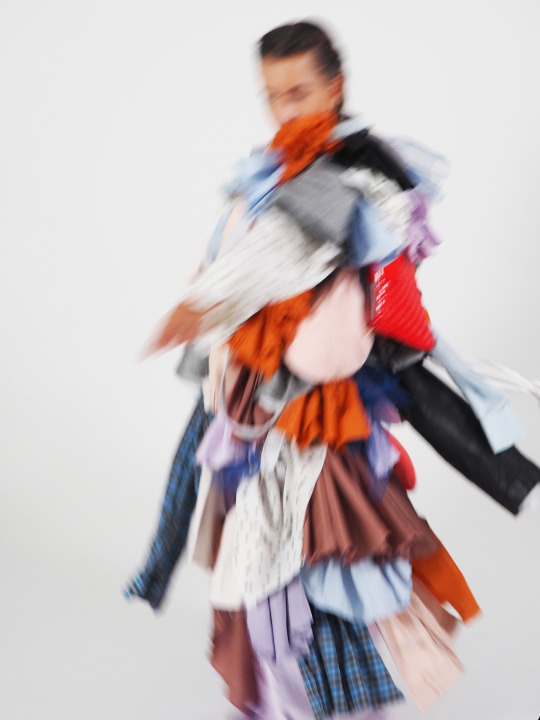
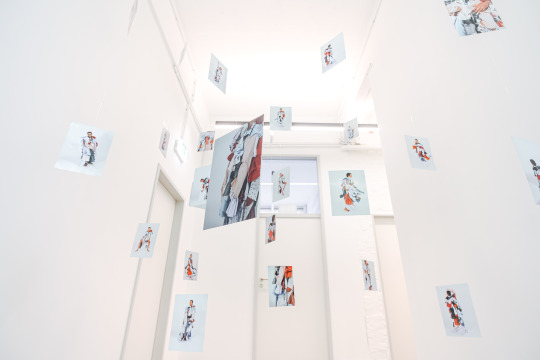
Everyday helpers like a small handbag or a smartphone necklace can make it easier for us to be prepared for all possible incidents that may occur during the day. Not only can the mobile phone always be carried close to the body, but also headphones, wallets, keys or small pockets for all kinds of objects find their place there.
But where does all this lead? Do all these things in their mass really support us, or do they rather hinder us silently and secretly? These are guiding questions of Ramona Fischer’s project »You got everything? - Too much of everything and yet too little«.
Ramona’s artwork transports the mass of things that constrict and limit us every day by means of a voluminous, elaborately crafted coat. Second-hand garments were disassembled into their individual parts, gathered, folded or sewn together again. This method creates voluminous fabric elements, which in their entirety give the coat an impressive but overloaded look.
6 notes
·
View notes
Photo




»Erwachsenwerden« | Charlene Jägers, Tutor Tomaso Carnetto
The poster is part of a project by our design student Charlene Jägers. Based upon Jeffrey Arnett's study »emerging adulthood«, Charlene has creatively dealt with the meaning of the term adulthood. The poster describes the different stages a young person passes when transitioning to adulthood.
»The composition was originally created from ripping a sunflower out of the ground (that was the starting point). I then visually deconstructed the process and the object and connected it to my own feelings.«
#emergingadulthood#erwachsenwerden#adulthood#visualdeconstruction#graphicdesign#communicationdesign#posterdesign#typography#design#study#academyofvisualarts_frankfurt
0 notes
Photo

»Sugar lie« | Josephine Hadel, Tutor Seyyal Carnetto
Josephine's large sculptures are based on the excess of sugar in our food and show the diversity of sugar in form and color, derived from various sweets and desserts: Fluffy, creamy, wadded like cotton candy, sticky-syrupy, powdery, hard like candy with colors between candy red and pastel shades. In an ironic way, the lies of the sugar industry, which makes us believe that we can consume sugar without any health consequences, are exposed - and a deceptive sugar wonderland is created.
#sugar#sweet#health#sculpture#candycolor#wonderland#lie#material#mix#communicationdesign#academyofvisualarts_frankfurt
4 notes
·
View notes
Photo

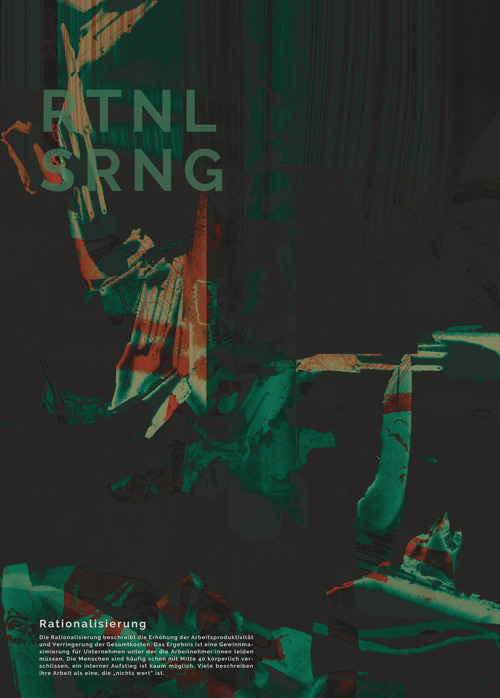

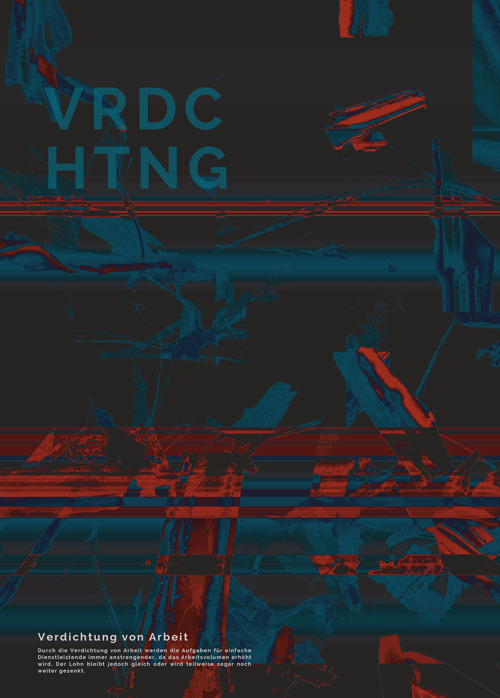
»Schöpferische Zerstörung« | David Kitsche, Tutor Anna Ranches
During his temporary work, David experienced the so-called „service proletariat“ - and a simple ballpoint pen became a symbol of this experience for him. David dismantled and destroyed the pen to generate the motifs of his poster series. It is a process of creative destruction, which also describes an important process in economics that serves to further rationalise labour.
#labour#experience#destruction#process#dismantle#poster#Posterseries#society#critic#graphicdesign#academyofvisualarts_frankfurt
0 notes
Photo
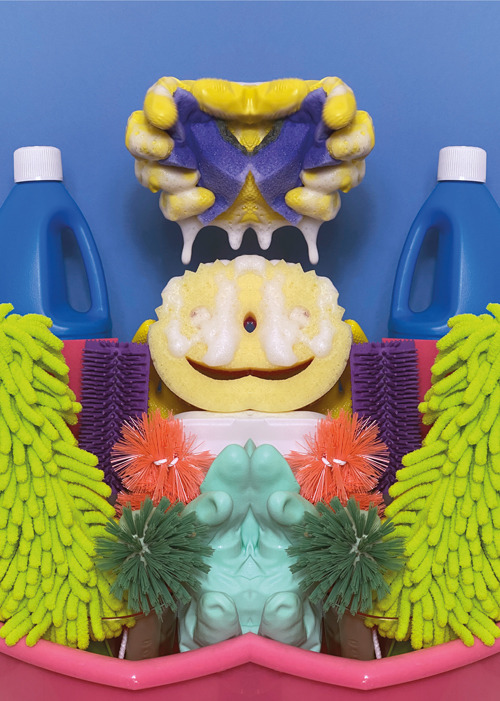

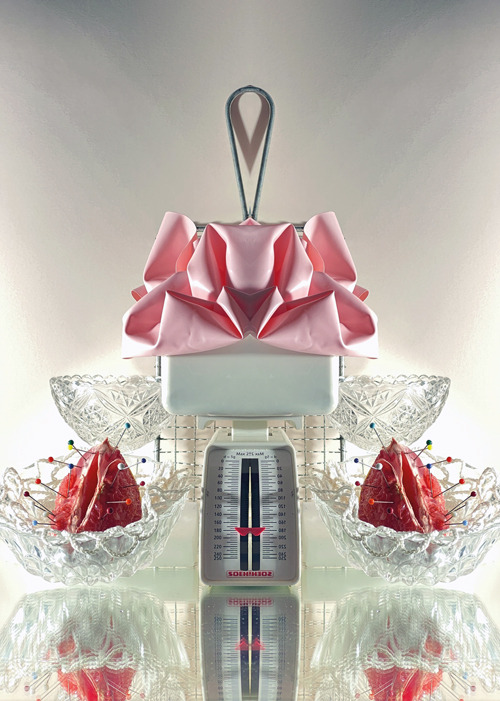
»Hausweib« | Gina Möller, Tutor Gina Mönch
Gina's large-format photographs of sculptures made of household objects translate the cliché of the American suburban housewife of the 1950s into brightly coloured Pop Art worlds. The everyday is alienated and the commodity world of the perfect household becomes a fetish.
#houswife#photography#objects#fetish#colors#alienation#series#sculptures#assemblage#household#perfect#stereotypes#academyofvisualarts_frankfurt
0 notes
Photo
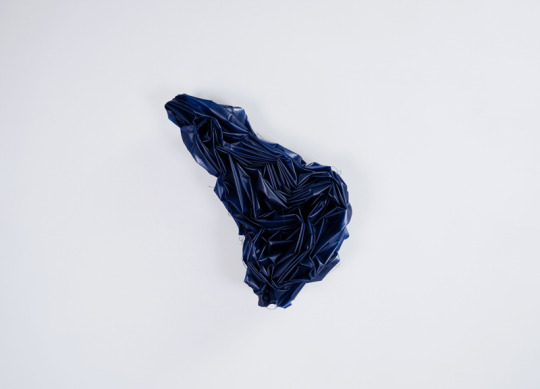
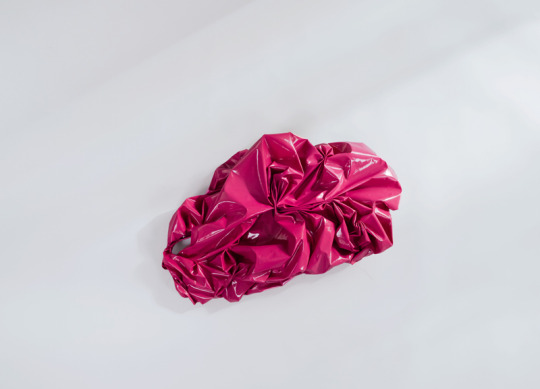


»Un-Dinge« | Christin Schreiber, Tutor Seyyal Carnetto
In a self-experiment, Christin exposed herself to the flood of information she experiences every day as a resident of a large city: Drawing, she walked three paths in Frankfurt, resulting in "seismographic records" that have a powerful graphic impact. Christin described the flood of information as a non-thing: It is virtual and weightless. Nevertheless it is a burden for people. In order to make this burden and its effects physically tangible, she used her drawings to create bags using a special folding technique.
#flood#information#living#city#processes#burden#weightless#effects#drawings#basis#bags#sewing#pleats#objects#communicationsdesign#academyofvisualarts_frankfurt
0 notes
Photo
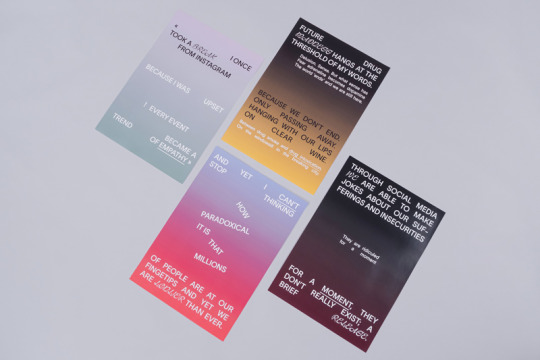
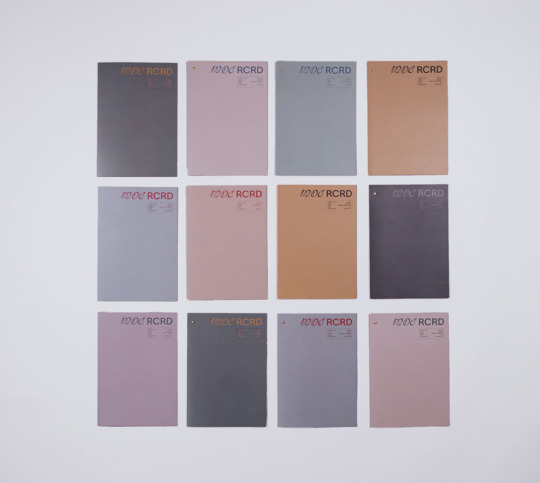
»Restless« | Irene Marchese, Tutor Seyyal Carnetto
The theme for Irene’s exam project is social media addiction and its effects on our mind and body. In fact, the social media usage statistics are painting a worrying picture. While older people are a little better equipped to deal with social media, with perhaps a little bit more cynism and willingness to question everything they see on a screen, the younger generations brought up with social media from a young age, are vulnerable. The intention for this project is to raise awareness about the degenerating side effects of social media by comparing it to a “typical” substance addiction. The work will be stating multiple data sets from statistics and personal information gathered through a questionnaire that Irene created. In conclusion, the manifestation of the project: The 10 medical records are differentiated by a color scheme each that continues throughout the record. As well as the posters, representing quotes taken by real statements given by the individuals asked in the questionnaire and research literature.
#restless#socialmedia#consumption#addiction#medical#records#poster#print#graphicdesign#communicationdesign#academyofvisualarts_frankfurt
0 notes
Photo


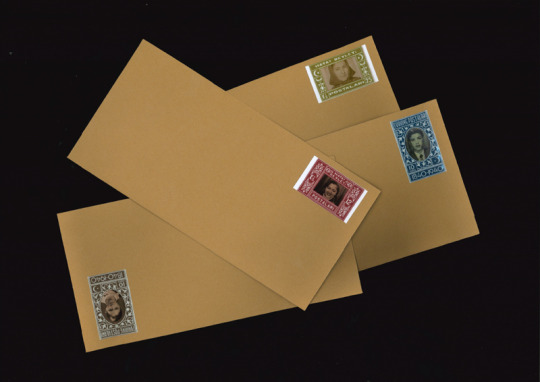
»Destan« | Sara El Kholy, Tutor Tomaso Carnetto
Sara El Kholy deals here with her own family history: her grandparents came to Germany as so-called “guest workers”, and for a long time the connection to the family was kept exclusively through letters. The stamps that Sara designs show various migrant workers. Traditionally, the portraits of important personalities are shown on stamps. In this series Sara now also puts the migrant workers and pays respect to their work and their courage.
#stamps#portraits#migration#family#story#courage#foreign#design#graphicdesign#work#communicationdesign#academyofvisualarts_frankfurt
0 notes
Photo


»She would always remember« I Anzhelica Morozova, Tutor Tomaso Carnetto
With her textile work Anzehlica remembers her grandmother, after whom she was named. Her grandmother was born in Iran, but her family was originally from Armenia. They were a traditional Armenian Christian family with five children, and lived in a large house with a beautiful garden. The handcrafted fabric is a reminder of when her grandmother and her three sisters would spend their time learning to sew with their mother out in their garden, and also represents the tapestries that were traded along the silk road that their father would travel along to bring items from several other countries to his store to sell to the persian people.
#textiles#textiledesign#fabric#colors#garden#flowers#sewing#remember#story#family#grandmother#Armenia#Iran#Persia#traditional#academyofvisualarts_frankfurt
35 notes
·
View notes
Photo

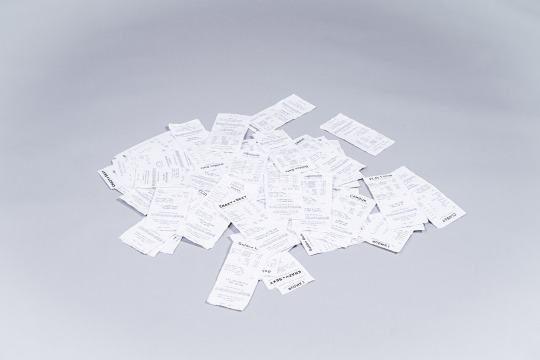
»Human as a product« I Irene Marchese, Tutor Seyyal Carnetto
Inspired by Ulrich Seidls movie »Paradise Love« Irene designed an infographic that would be as raw as his movie. Her theme is "Human as a product« in relation to the topic of prostitution. As a consequence Irene worked with the elements of a reicept. She deconstructed a typical supermarket receipt and replaced the text elements with the data given by a study called "The prices of prostitutes all over the world“. To create the comparison to the worth of that amount of money in Europe, she added a list of groceries that you would be able to buy for that price. At the top of the receipt instead of a supermarket brand you can find a typical name for a brothel. At the bottom you find the location (where the prostitute is from and the price in that country), the name of the lady that served you and a provocative sentence (a supermarket slogan).
#infographic#human product prostitution#receipt#supermarket#tranformation#comparison#prices#graphicdesign#communicationdesign
0 notes
Photo
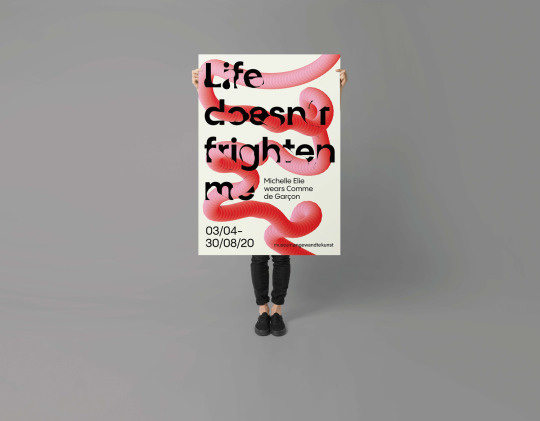
»Corporate Design / Life doesn’t frighten me« I Christin Schreiber & Verena Vogler, Tutors Filiz Dindin & Daniel Carrascal
A fictitious corporate design is to be created for a freely selectable museum exhibition. Verena and Christin chose the exhibition "Life doesn't frighten me. Michelle Elie wears Comme de Garcons" at the Museum Angewandte Kunst, in which fashion by designer Rei Kawakubo is worn and displayed by Michelle Elie. Similar to Kawabuko's approach in her patterns, the focus in Christin and Verena's corporate design is on deconstruction and displacement – only applied to typography and graphics: letters are bulged out and permeated by graphic elements.
#corporate design#culturaldesign#exhibition#poster#graphics#typography#campaign#part of#fictious#communicationdesign
0 notes
Photo

»Wood Wide Web« I Paula Murariu, Tutor Tomaso Carnetto
Wood Wide Web is a combination between roots and fungi. In this way, individual plants and trees are joined to one another by an underground network: a complex and collaborative structure that has become known as the Wood Wide Web, a living system, similar with the system of human beings. Paula’s compositions bring all this interconnections to life that are happening underground between the plants, in a continous dance of giving, receiving, helping, destroying, but making everything possible to keep the system in balance and the entire nature in harmony.
#underground#plants#connections#helping#supporting#mutual#joined#woodwideweb#innterconnection#graphicdesign#communicationsdesign
0 notes
Photo


»Social Dependance« I Charlotte Heck, Tutor Seyyal Carnetto
Charlotte's bracelets are meant to draw attention to social ills in Africa, such as increasing sex tourism. The bracelets are distributed by a fictitious association called »Pearl Girls«. Charlotte's work is inspired on the one hand by the reception of Ulrich Seidl's film »Paradise: Love« on the other hand by a tradition of the Kenyan Samburu tribe, whose girls and women wear pearl jewellery around their necks, marking them as (sexual) property of the men. The analysis of the film structure served as a compositional method of stringing the beads. The jewellery is sold by the association »Pearl Girls« and thus promotes social projects to support affected women.
#bracelet#campaign#association#social projects#womens rights#africa#jewellery#pearls#communicationdesign
0 notes
Photo
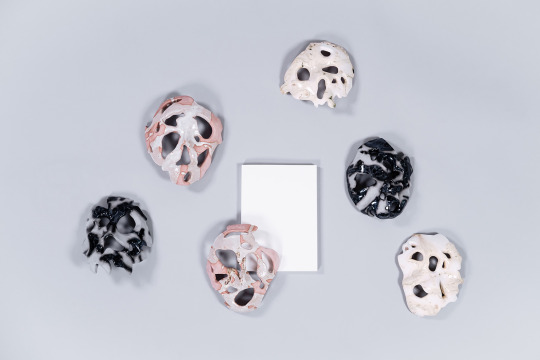

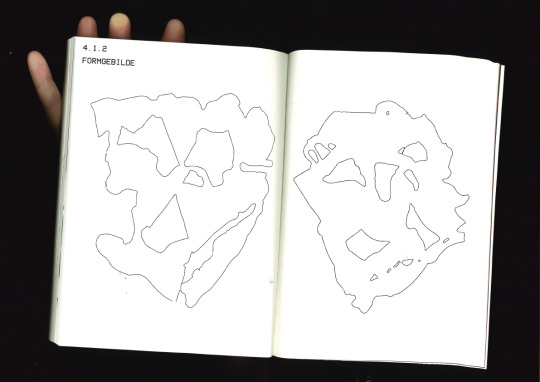
»Facetten der Scham« I Cynthia Schmachtenberg, Tutor Seyyal Carnetto
The basis of Cynthia's work is an analysis of Ulrich Seidl's movie »Paradise:Love« under the aspect of shame. She oriented herself on the physiology of shame, the physical expression and the characteristic appearance and movement. Body silhouettes were taken from film scenes that contained shame-inducing actions – the basis of a construction kit of fragmentary forms that were finally assembled from clay into faceless masks. Inherent in them is the duality, rupture and opposing movements of shame, the writhing and simultaneous solidification. An accompanying book documents this process.
0 notes
Photo


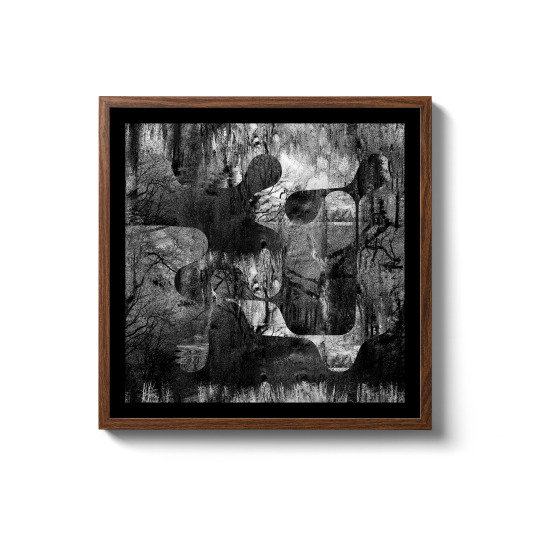



»Waldexistenz« I Martin Dietrich, Tutor Tomaso Carnetto
Martin's photo series stages the forest as a symbol of existential questions: life, death, decisions, future. As a metaphor, the forest opens up different realities and yet always remains inscrutable. With the help of a matrix, Martin transformed key words from a description of a personal experience in the forest into form structures, which he linked in code-based calculation processes with abstracted photographs of forests. This process can be used to create countless compositions that show the forest as a space of inexhaustible possibilities and decision-making paths.
#forest#symbol#existential#questions#photo series#black and white#transformation#coding#myriad#possibilities#communicationdesign
0 notes
Photo



»Unfamiliar Familiarities« I Anna Ntombi Marx, Tutor Tomaso Carnetto
Anna's posters thematise memory – specifically, how to deal with incoherent and patchy childhood memories that are constantly updated as individual elements are reassembled, combined with each other and thus repeatedly placed in different contexts – a process that she also uses in her design process. The result is fragile but also poetic posters that invite the viewer to connect with his or her own memories.
0 notes
Photo

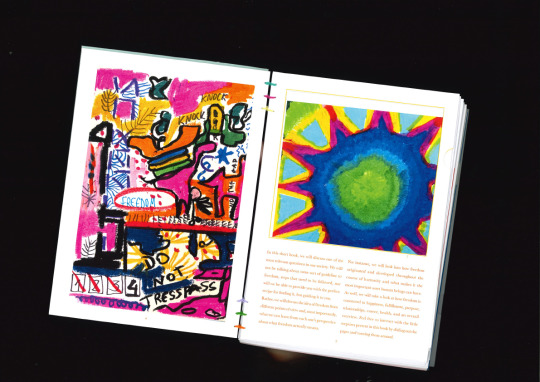

»The Most Important Question You Should Ask Yourself« I Ana de Oliveira Bottós, Tutor Tomaso Carnetto
Reminiscent of the children's books that Ana used to love so much, Ana designed a children’s book for young adults, which answers questions about freedom, the idea behind it, differences within context, a bit about the 60s, important movements and overal freedom in a nutshell. The content is based on her personal experience of growing up and the reflections she made along the “adulthood road”, adding important facts about freedom, as well as an interesting guided conversation about what it means to be free.»The Most Important Question You Should Ask Yourself« is envisioned not to be a guide to freedom but to talk to people, make them reflect, hopefully even alert them from being neglected of freedom within circumstances.
1 note
·
View note